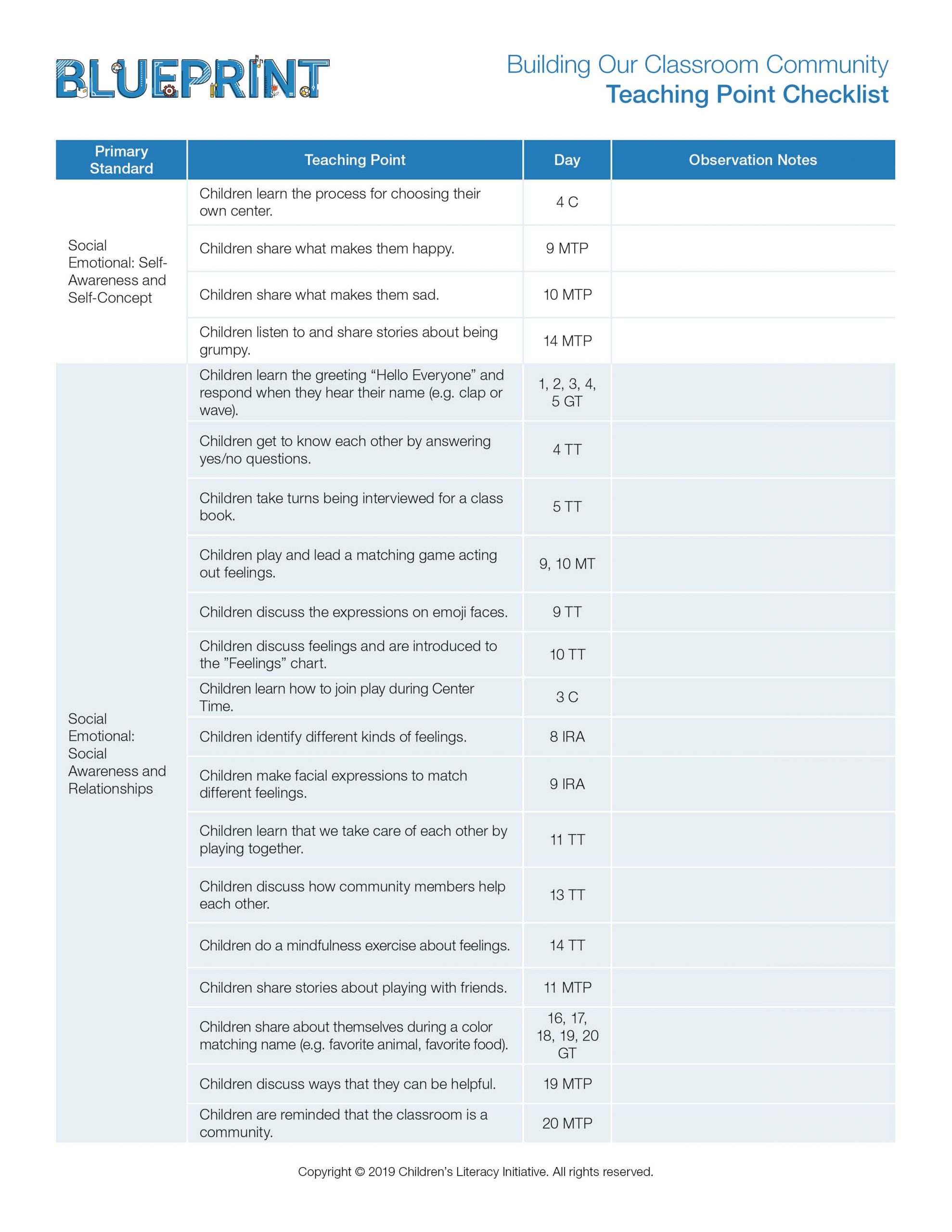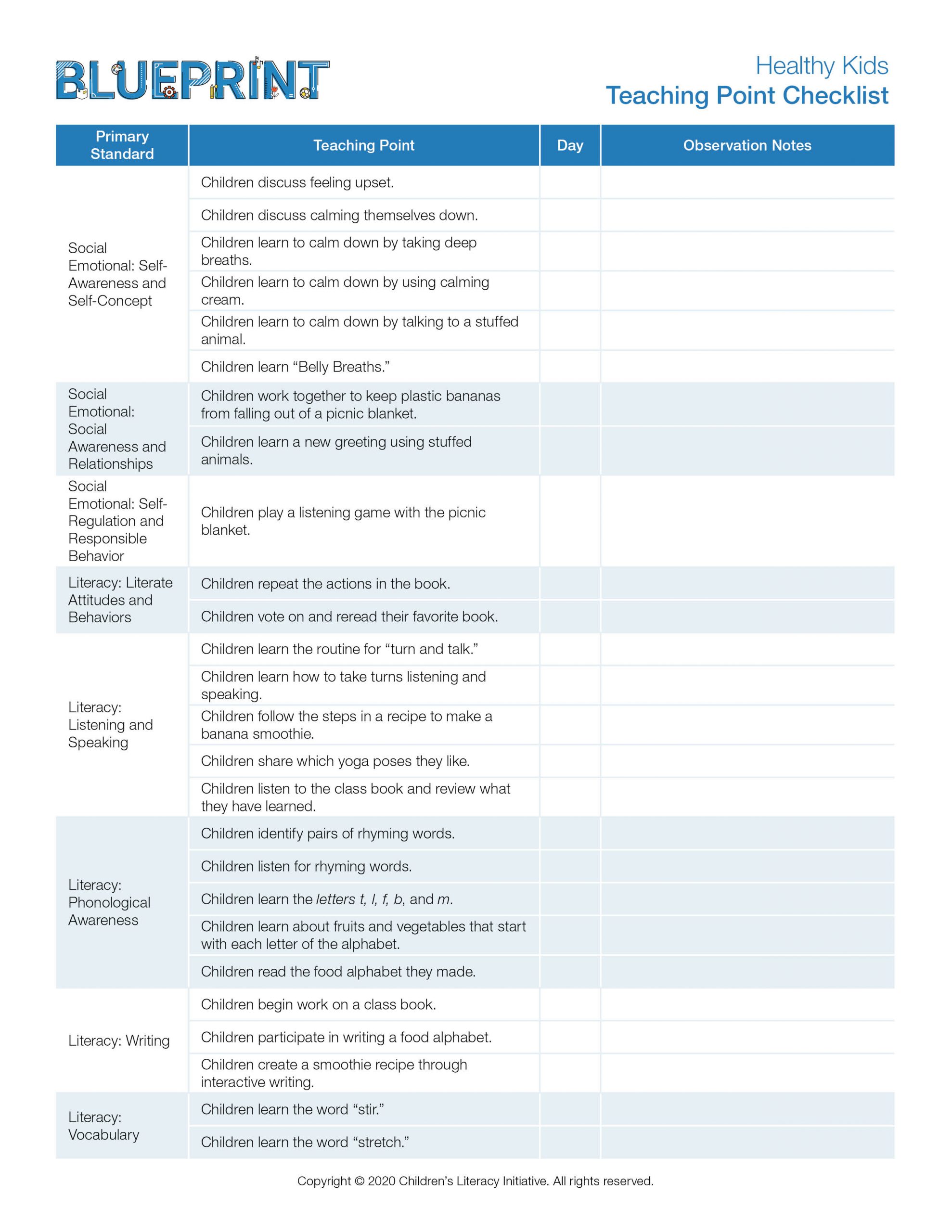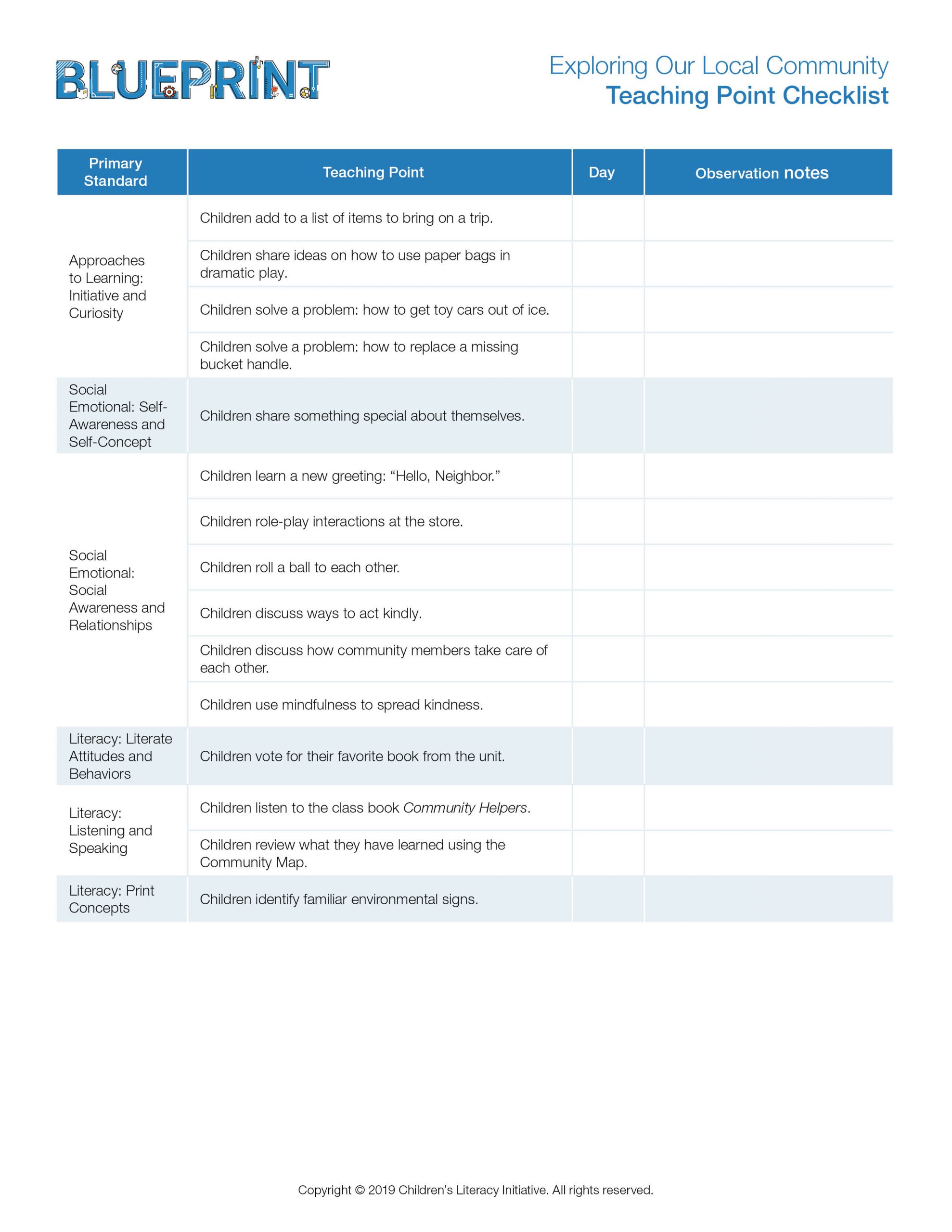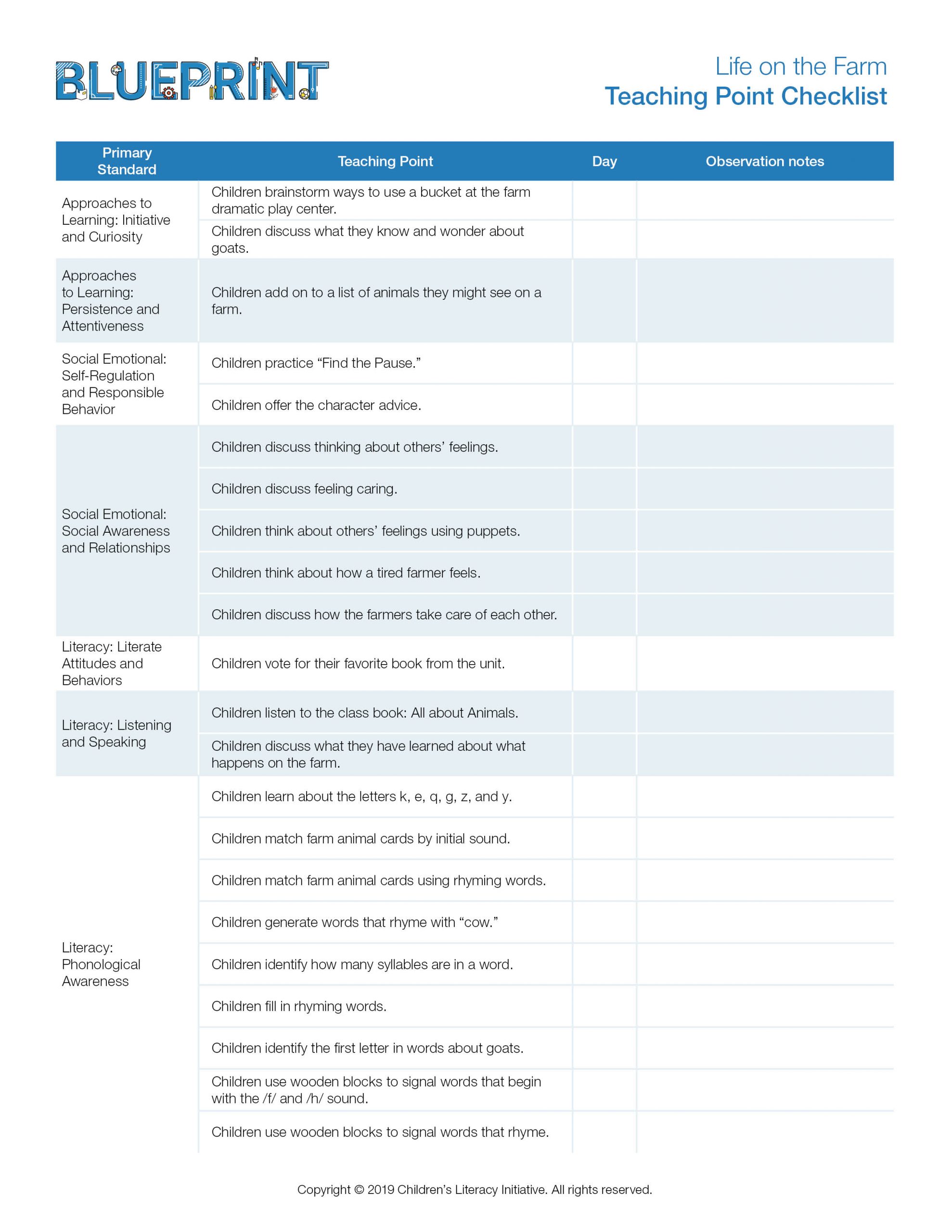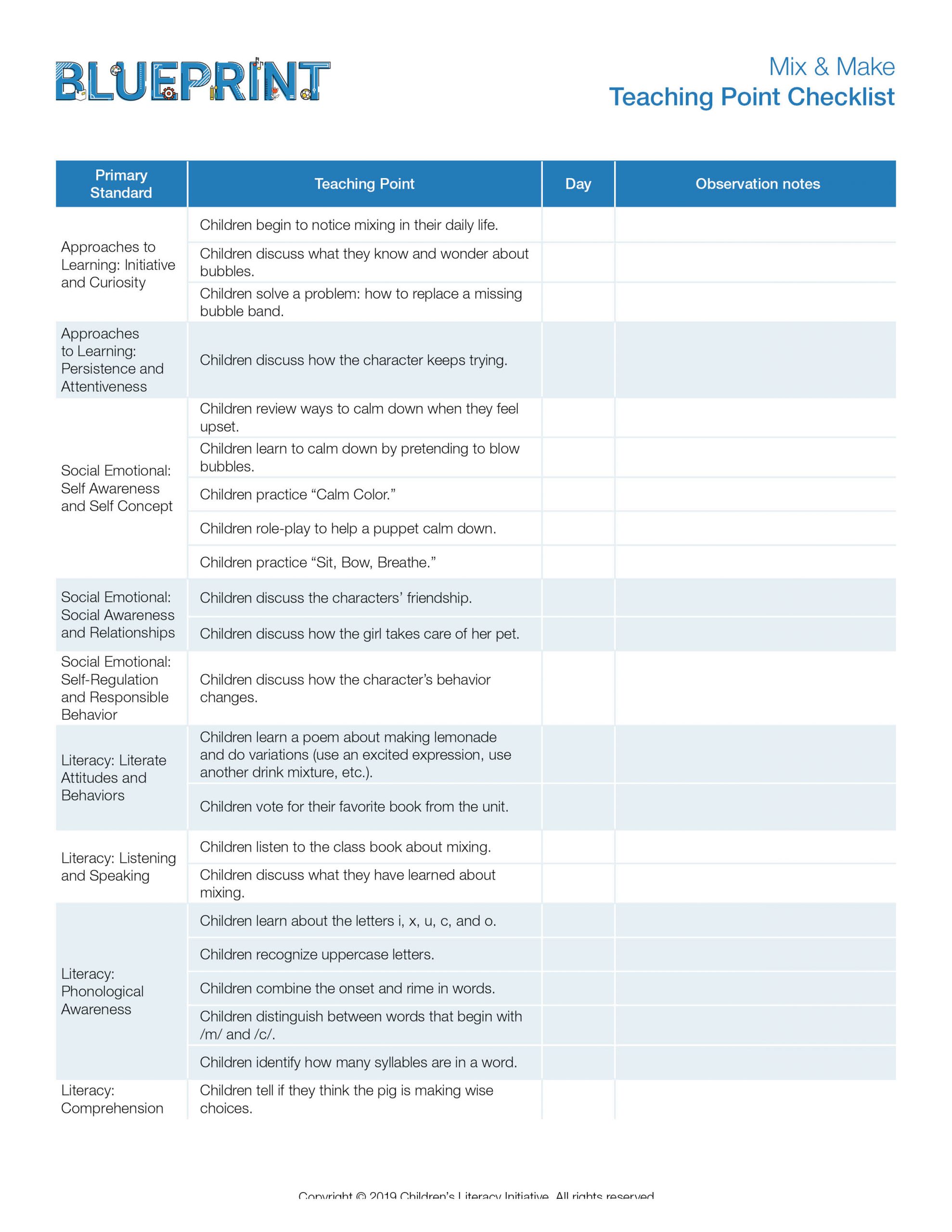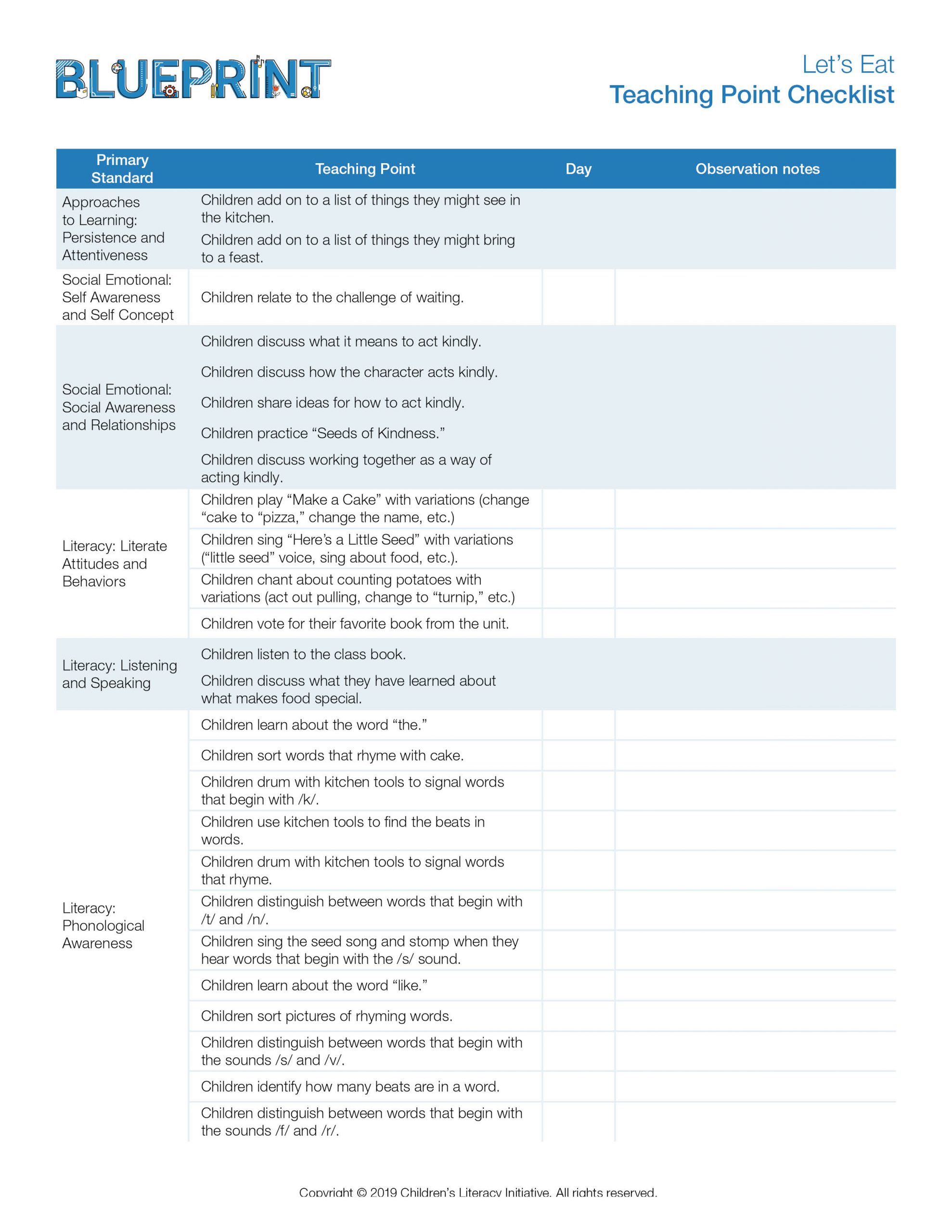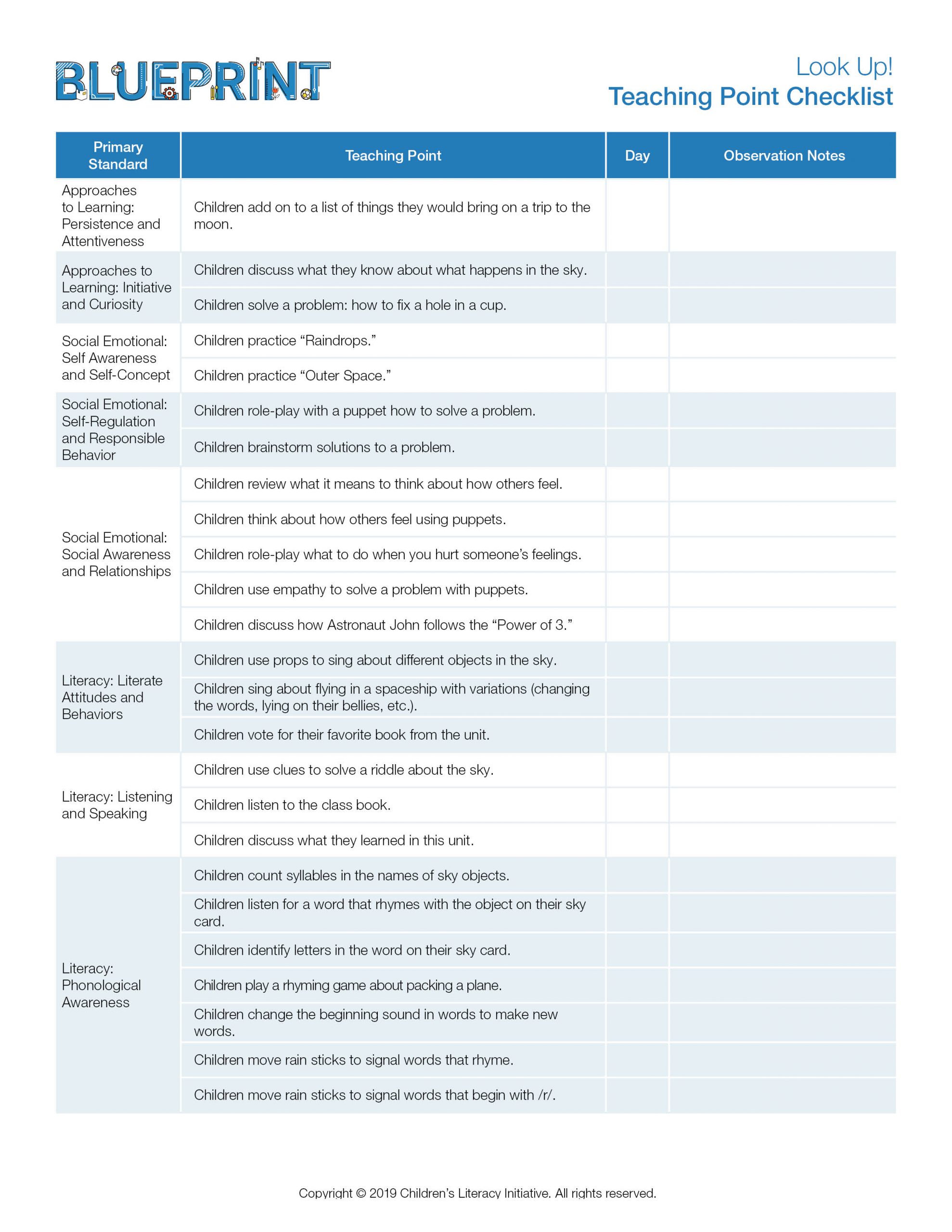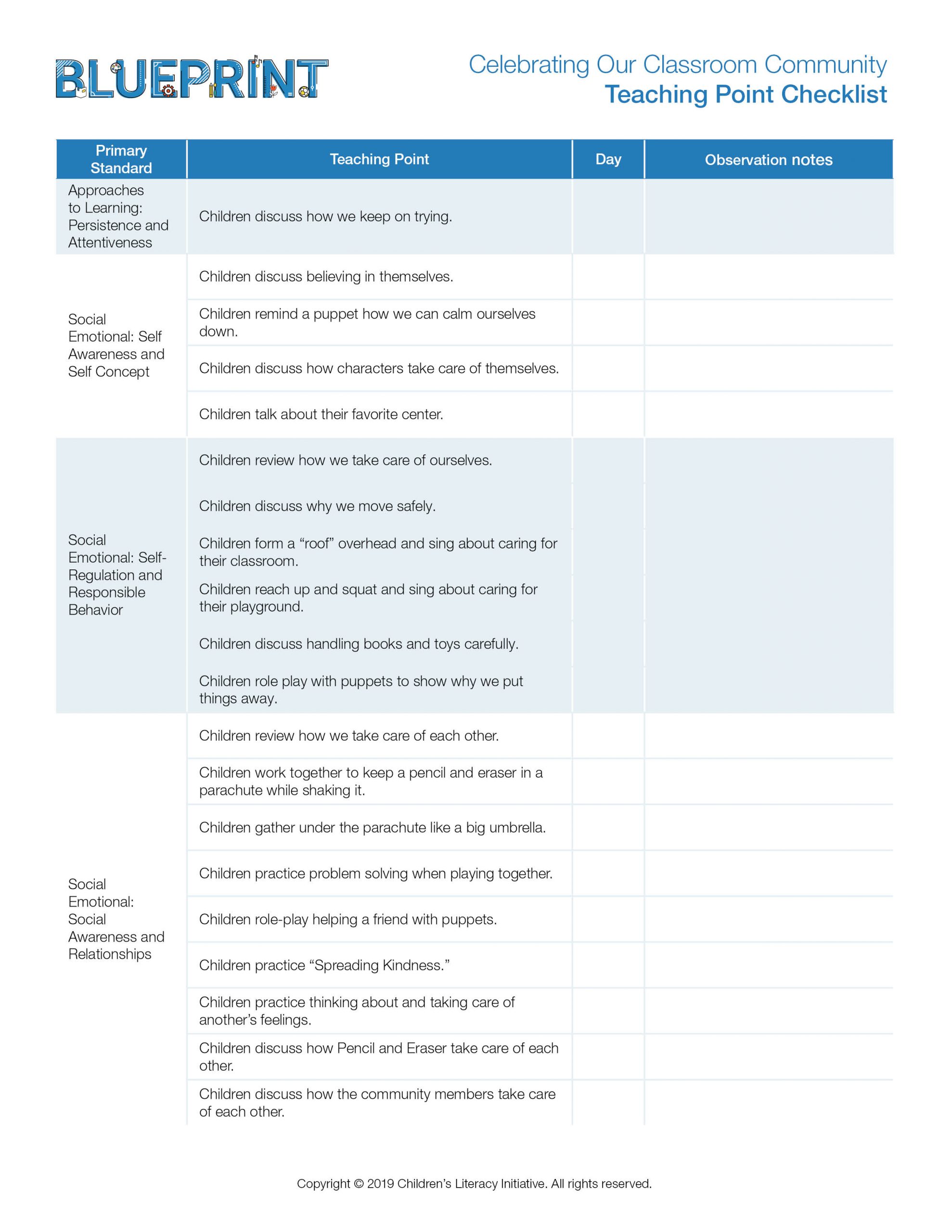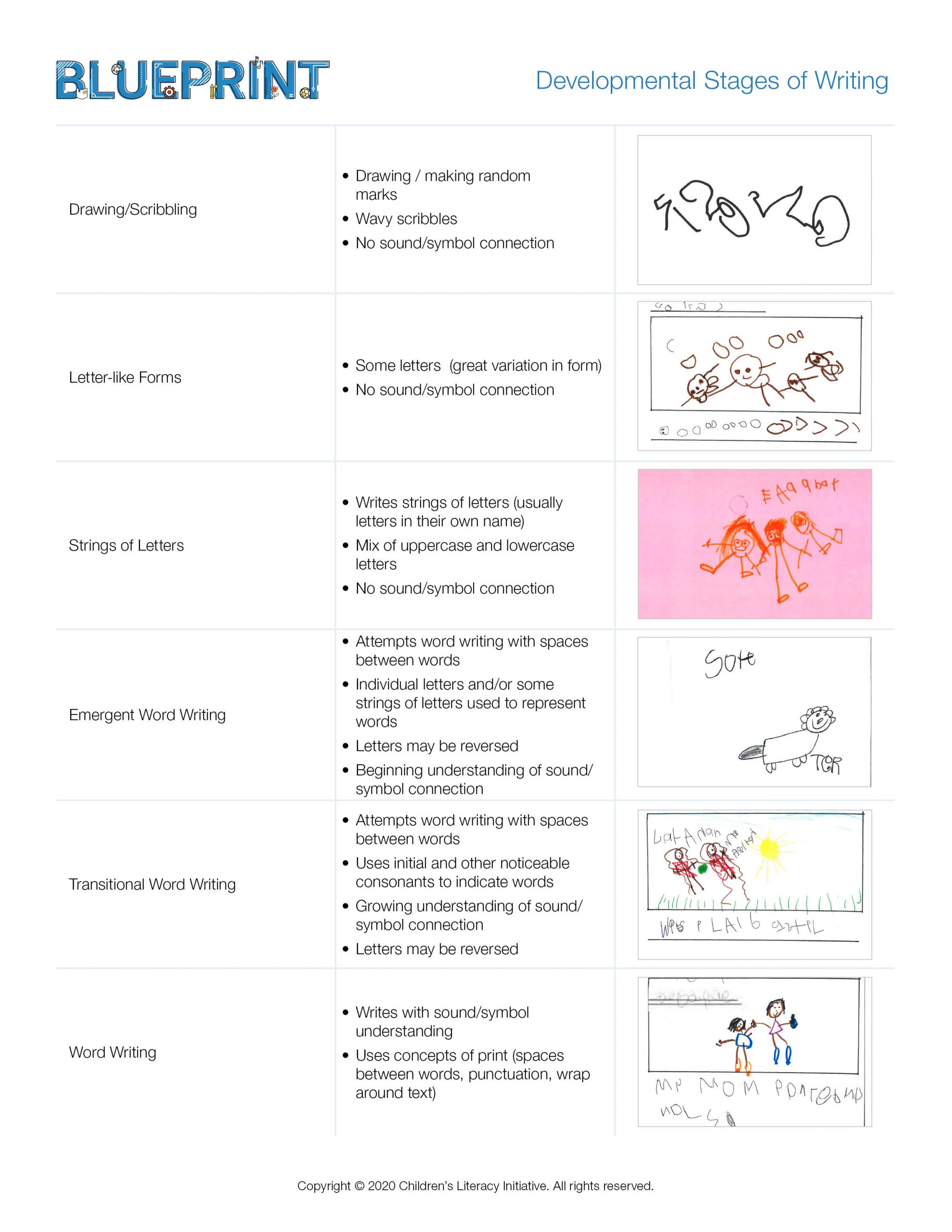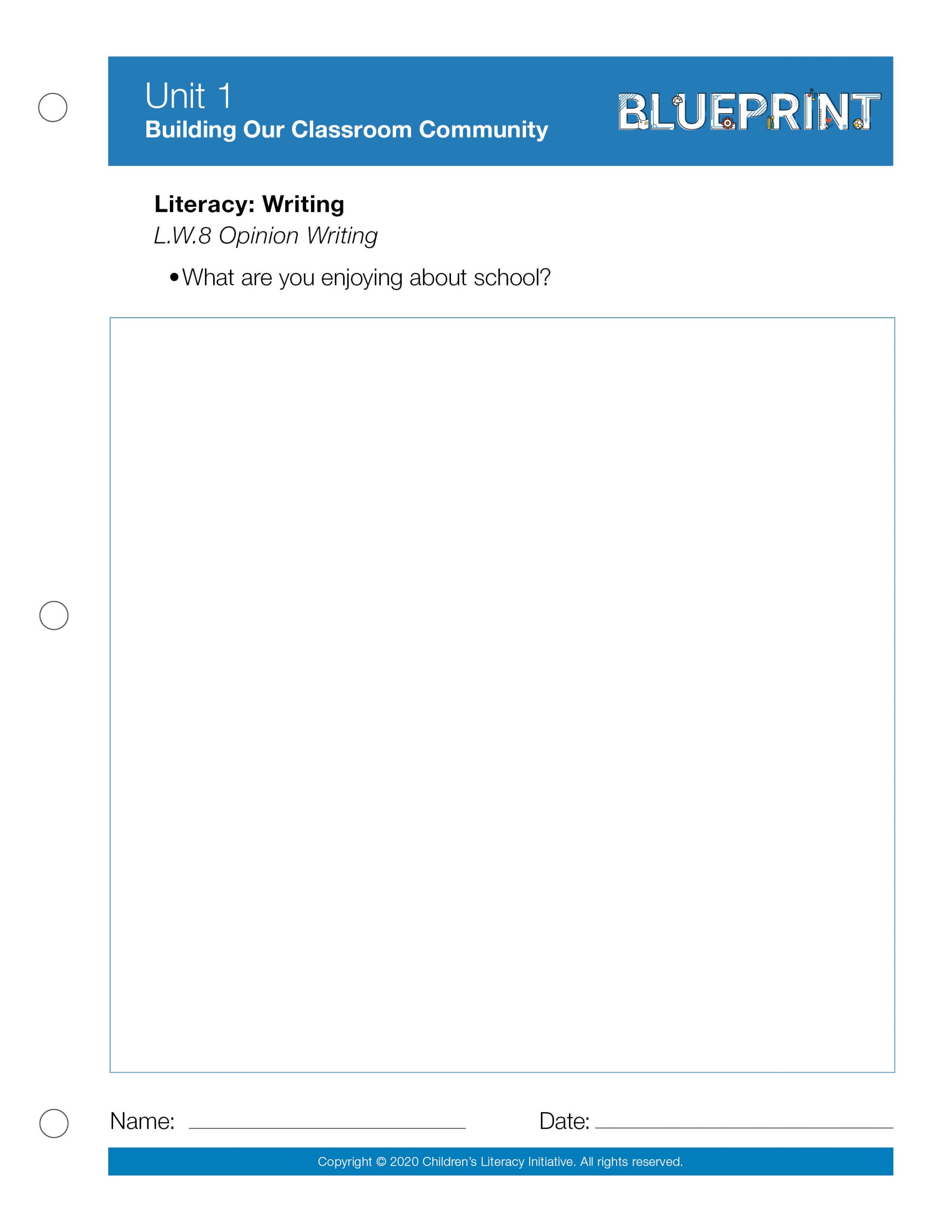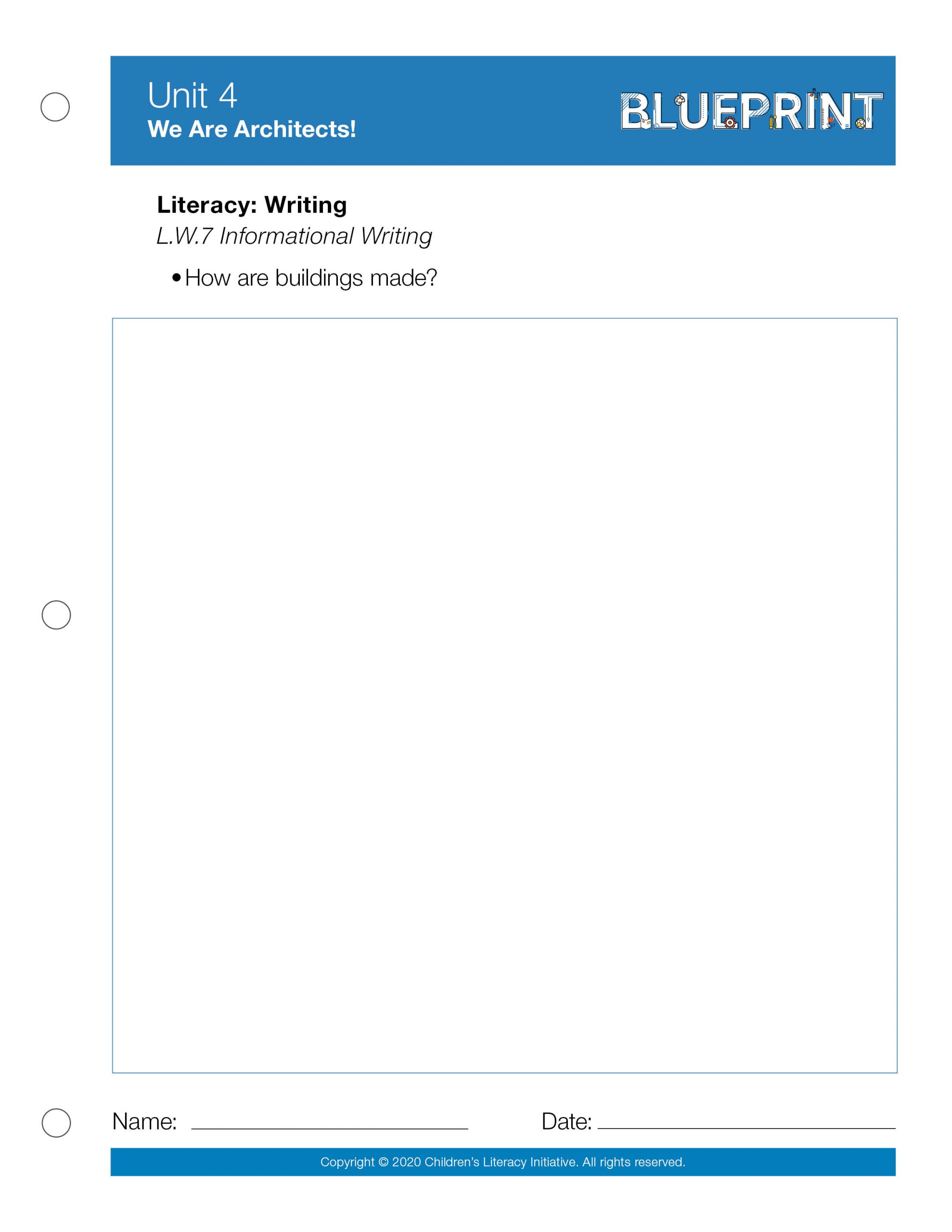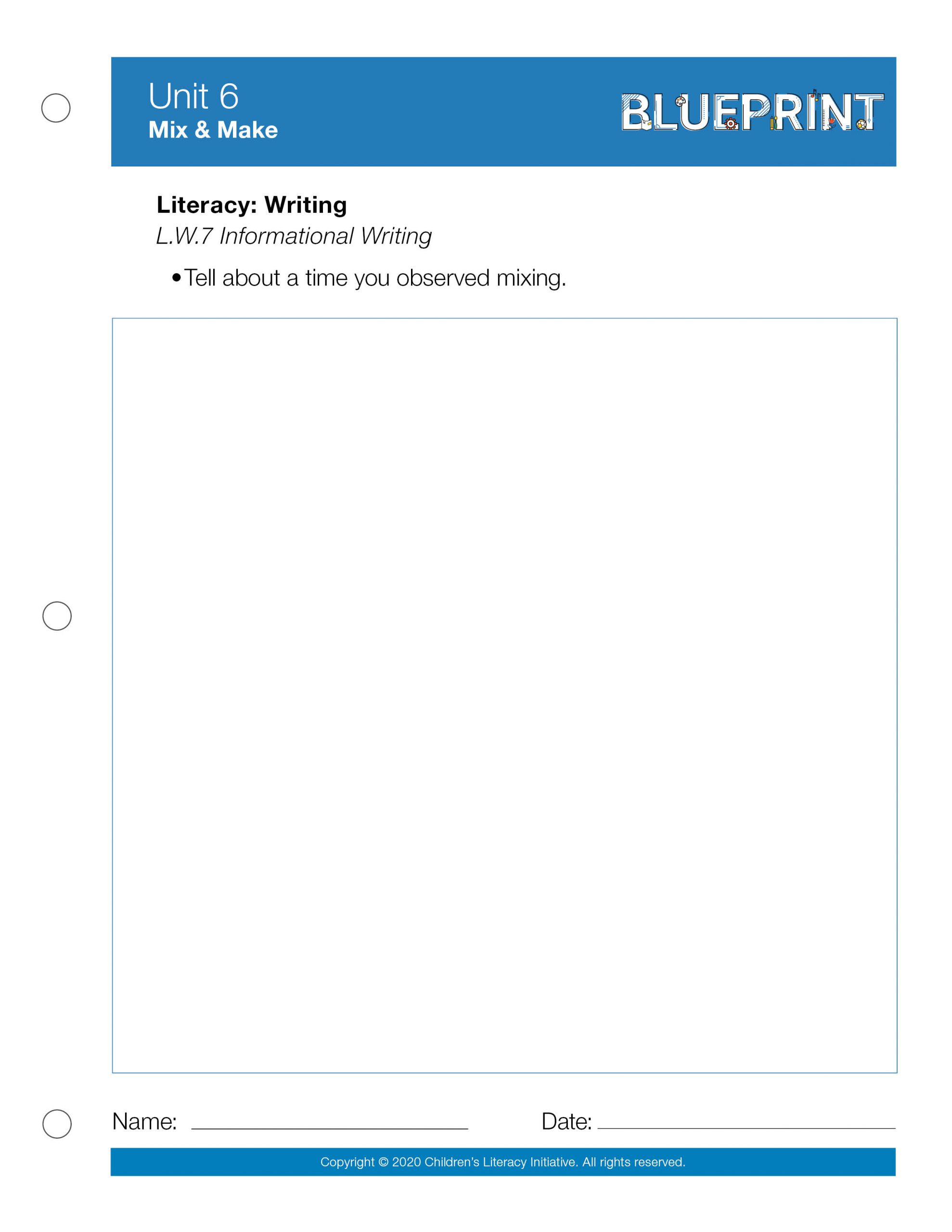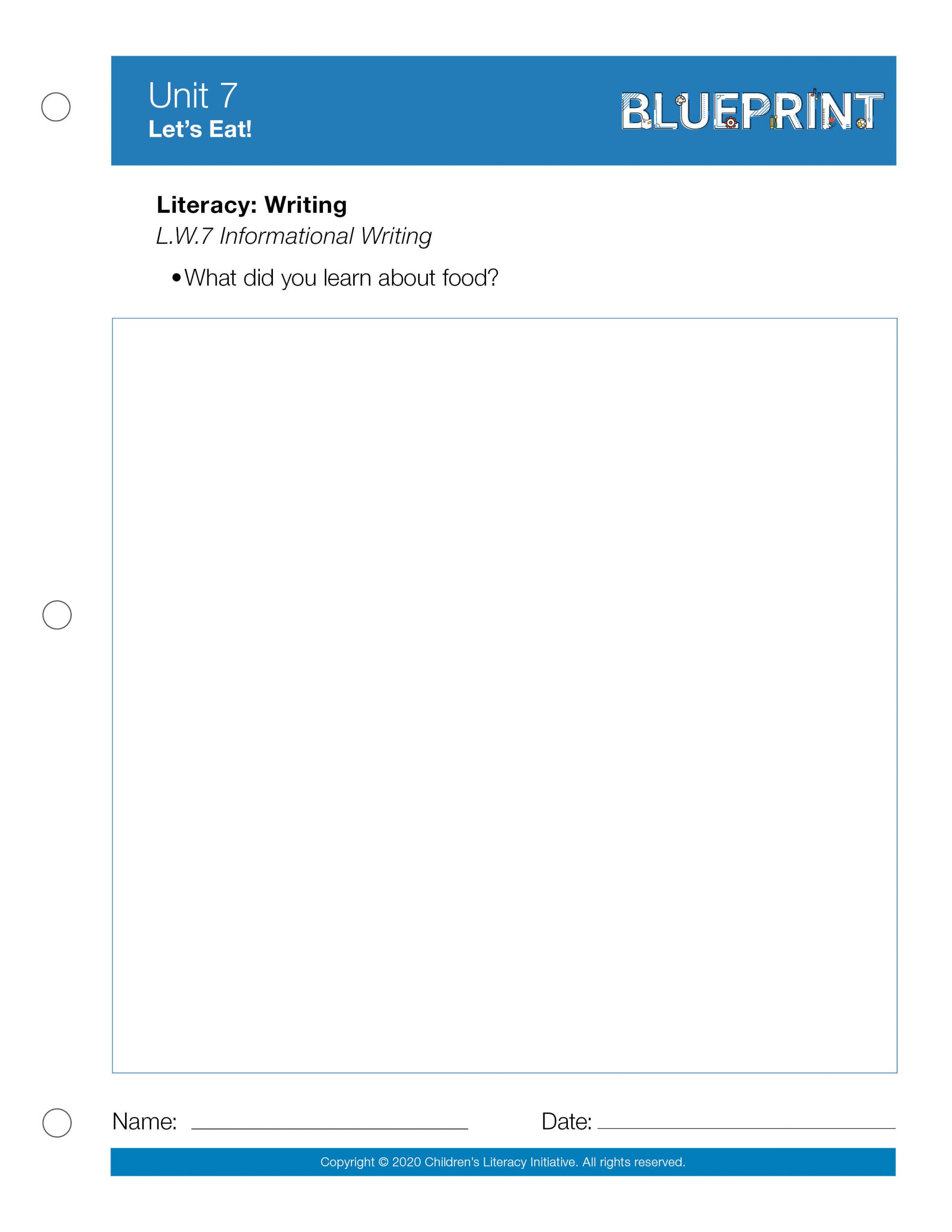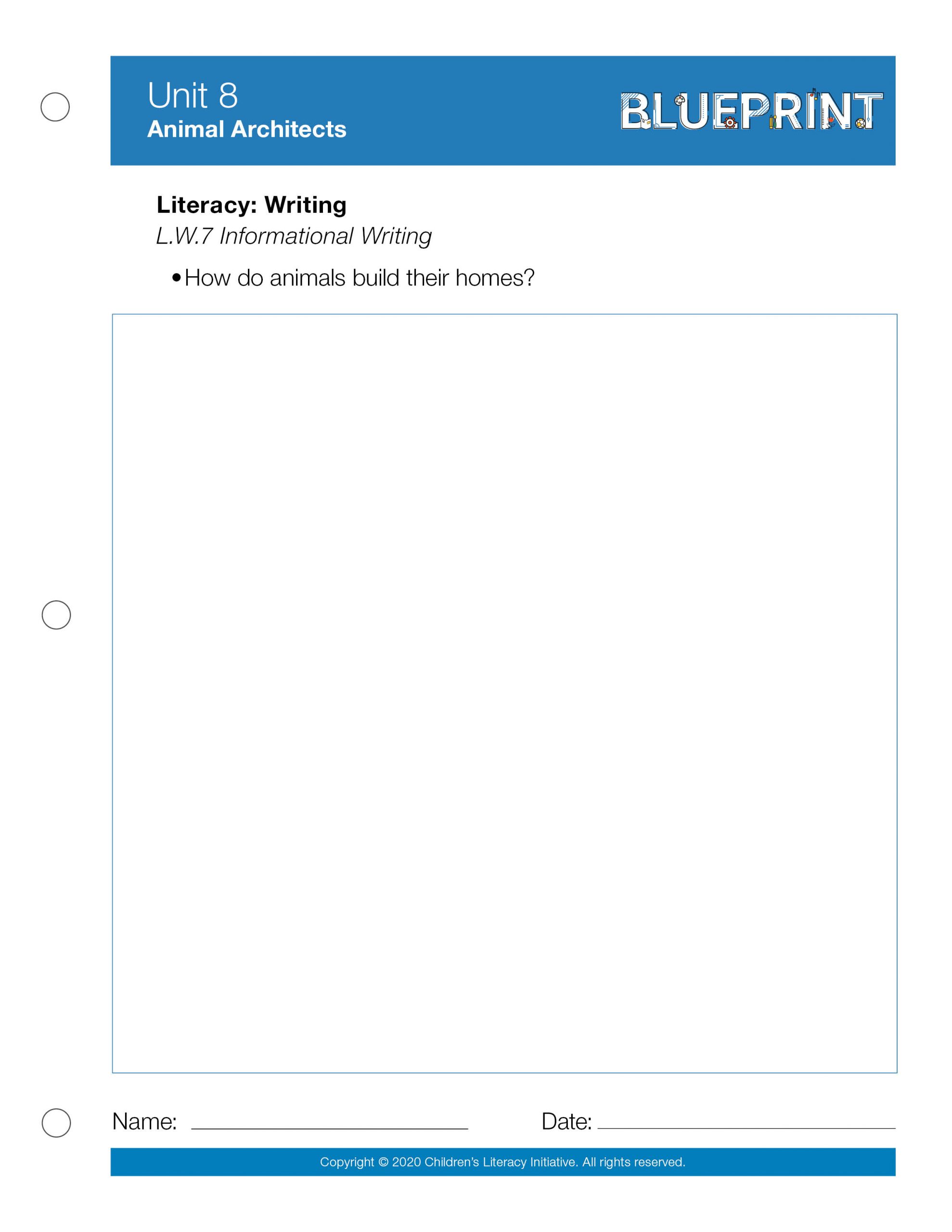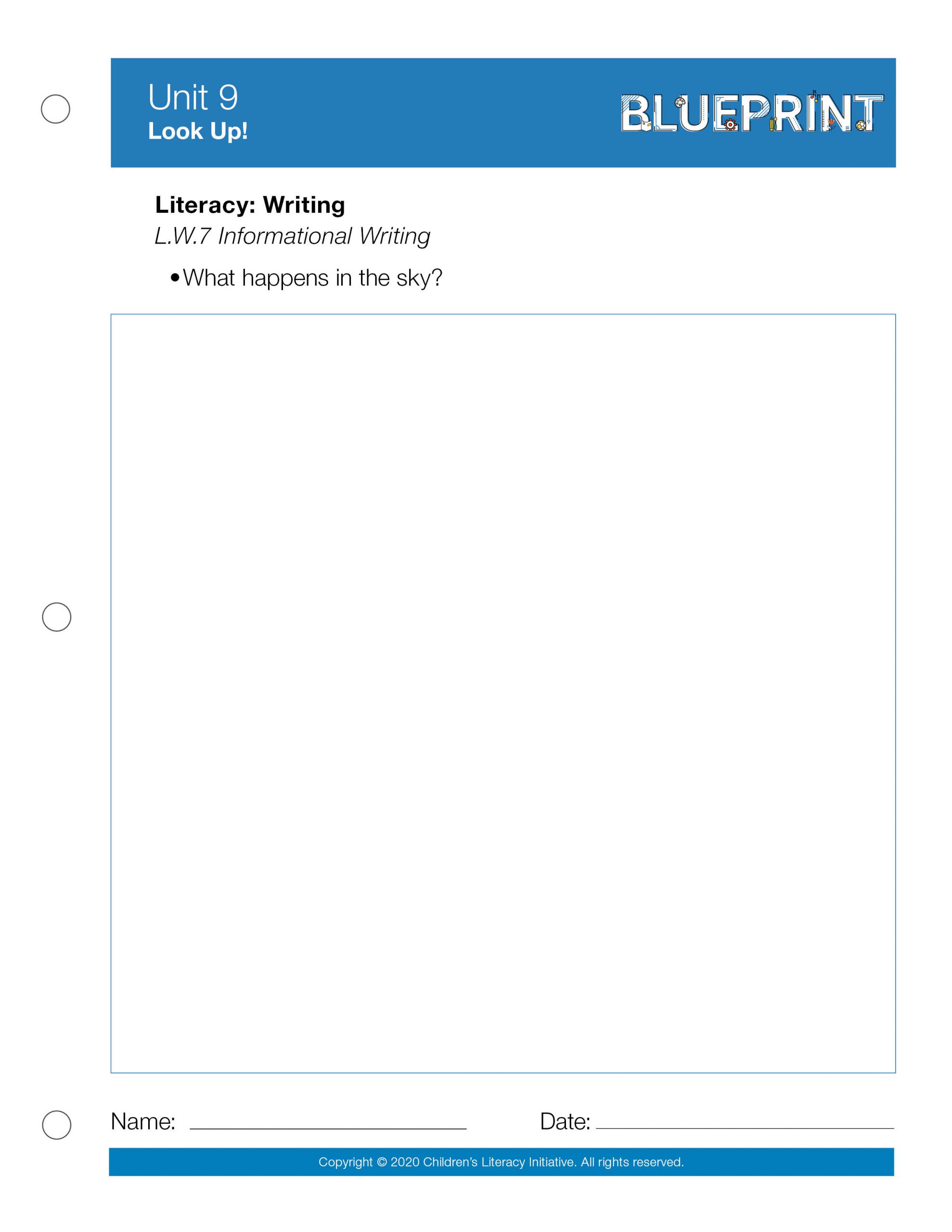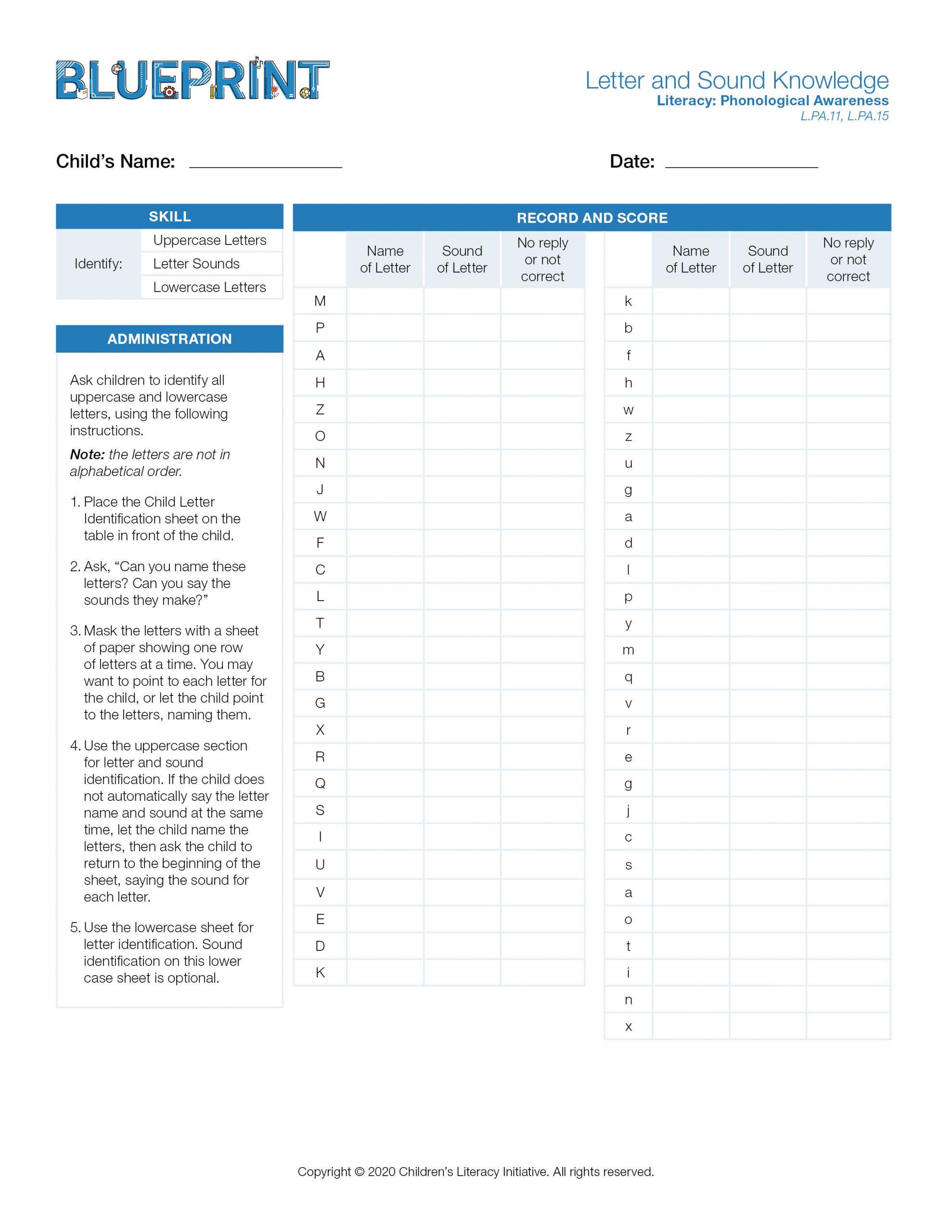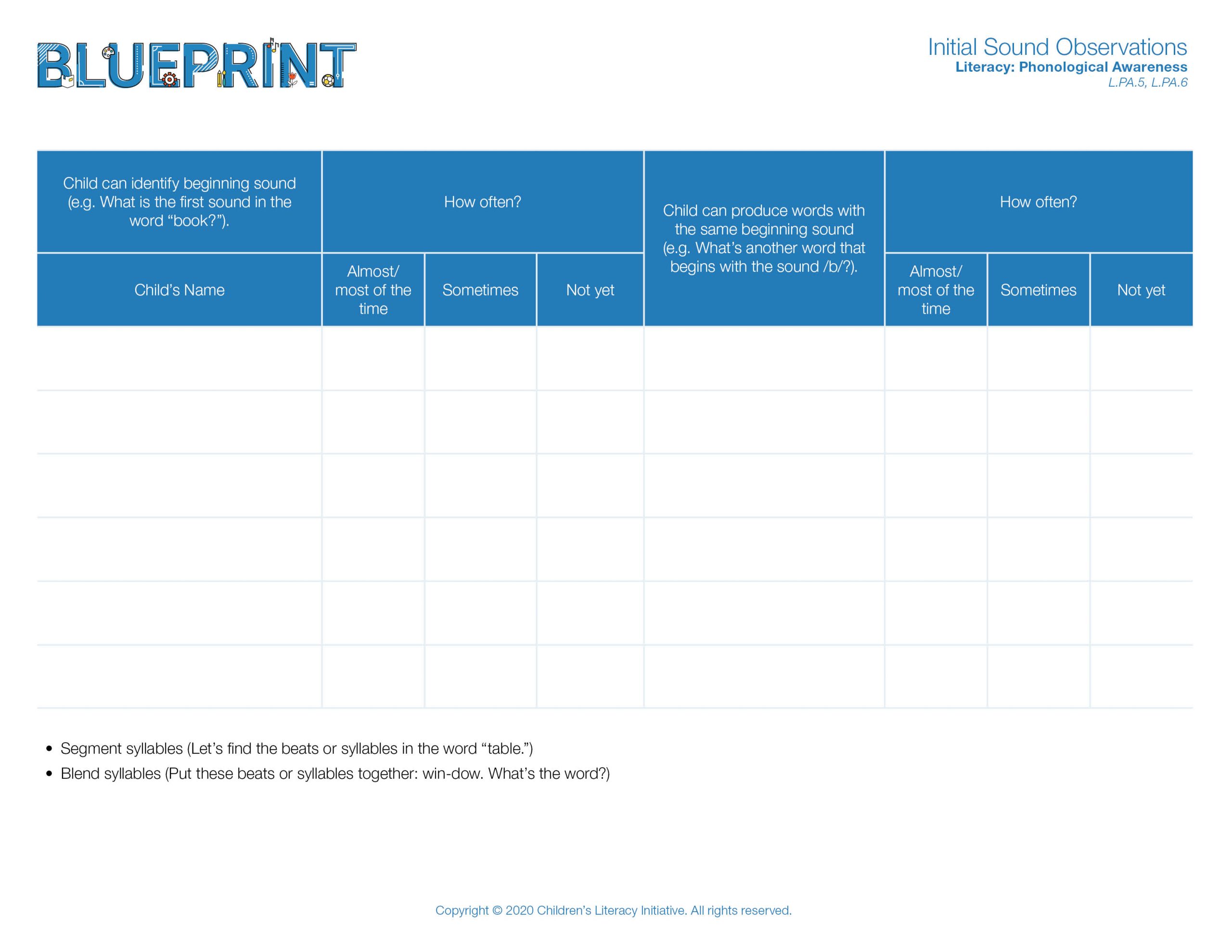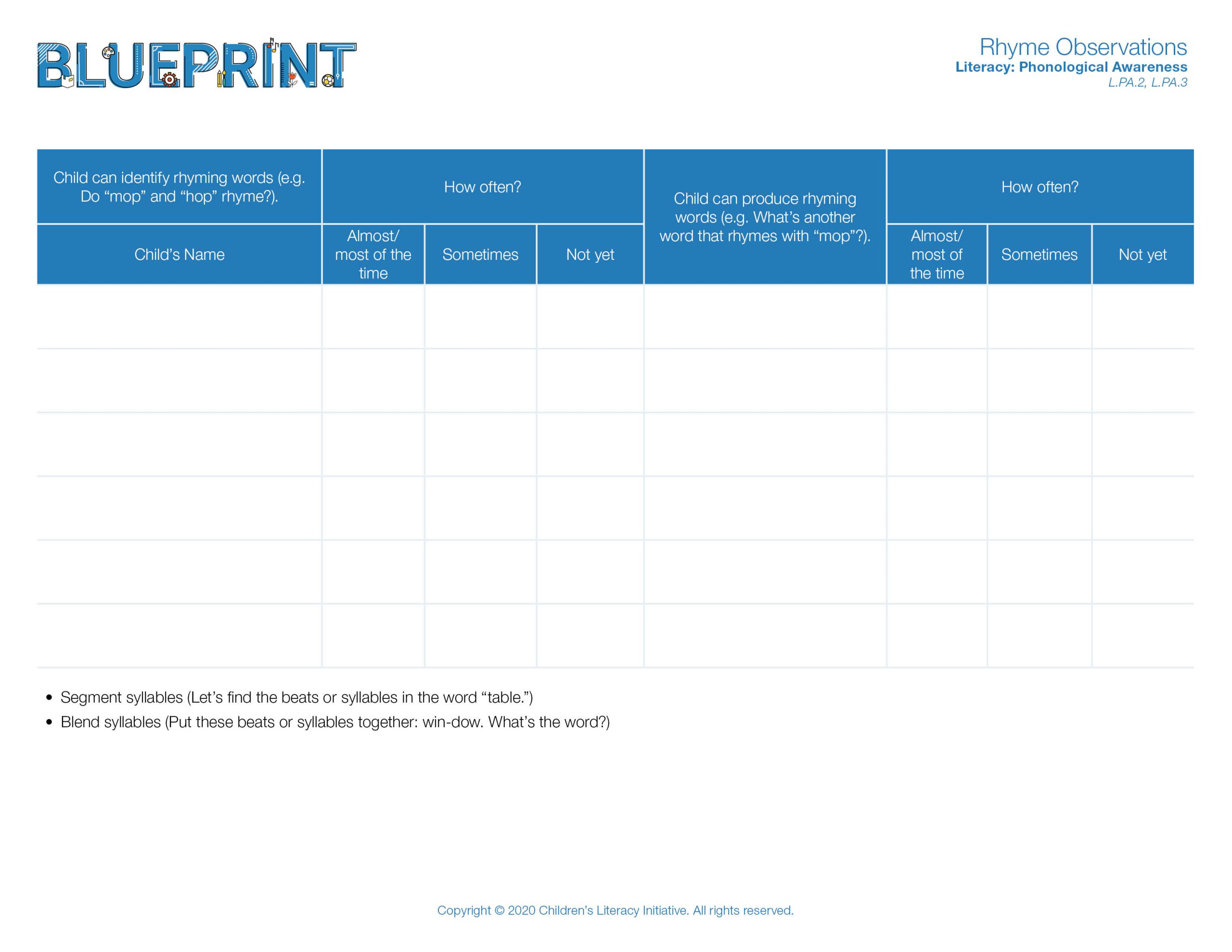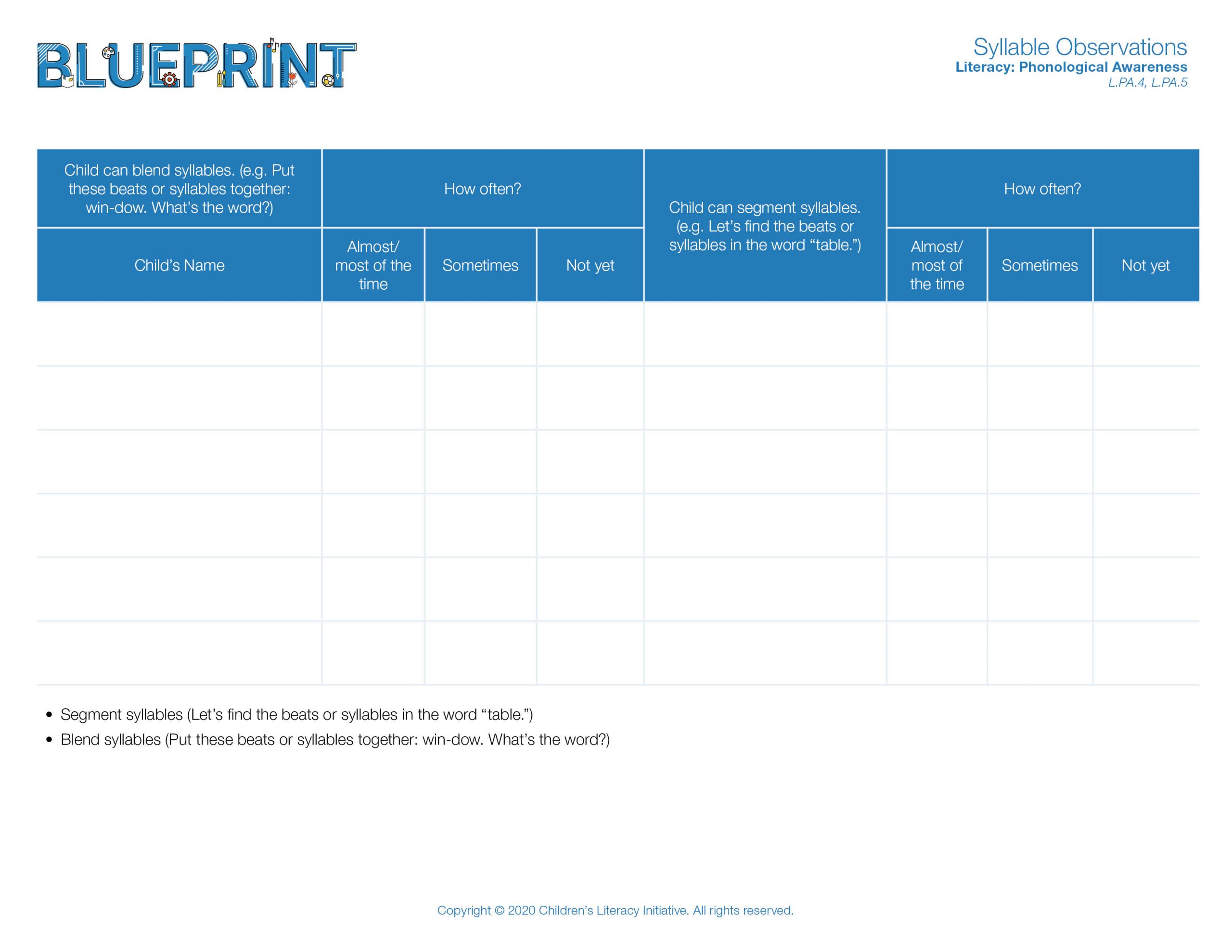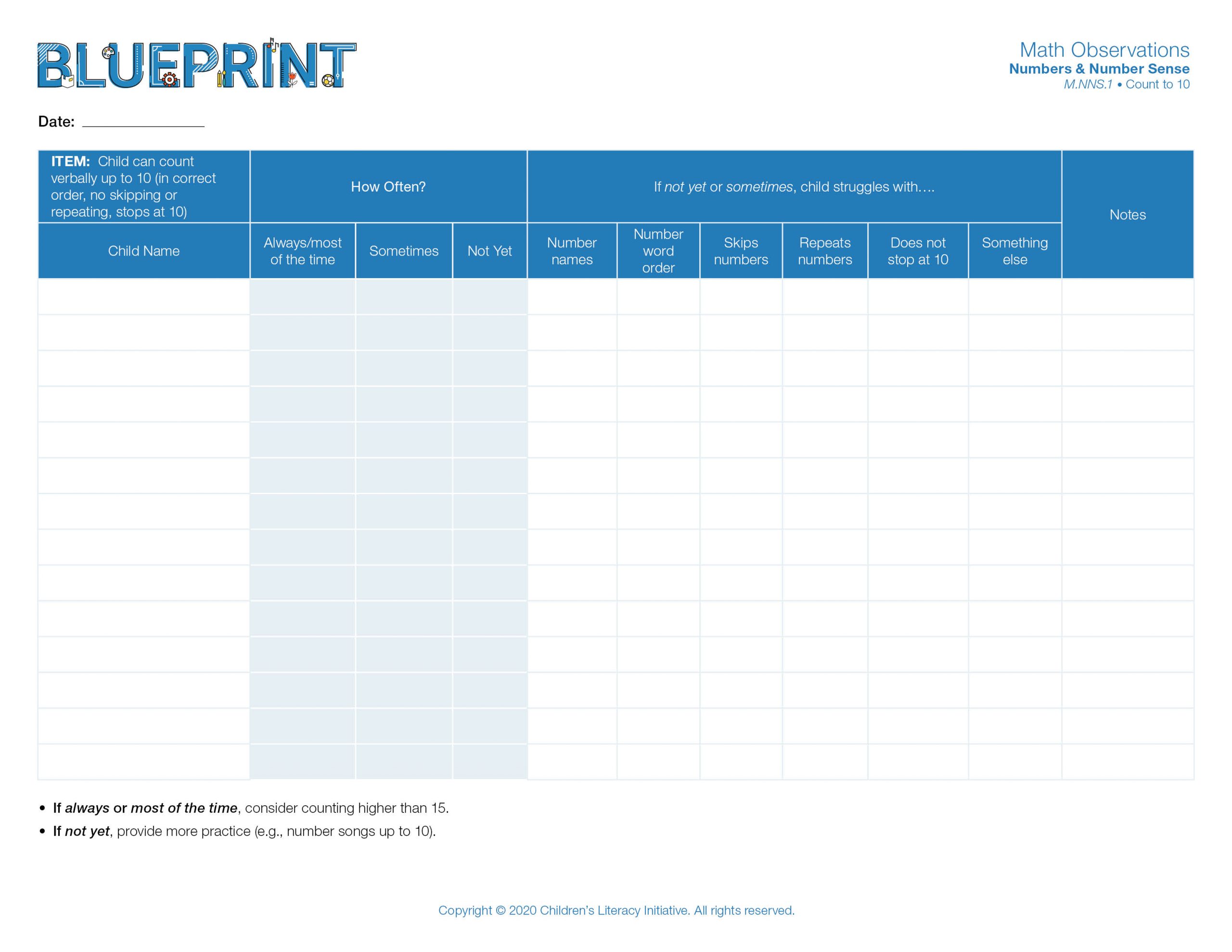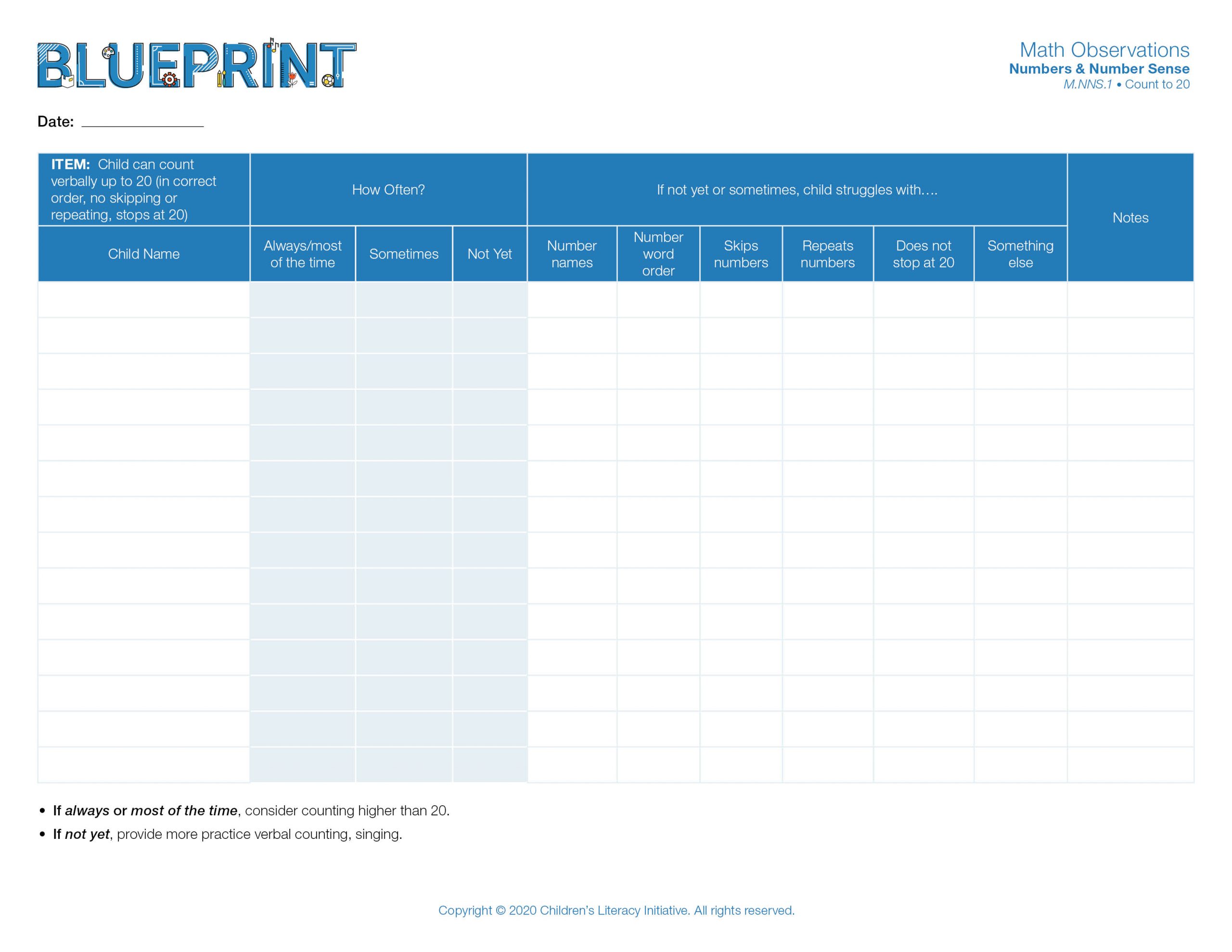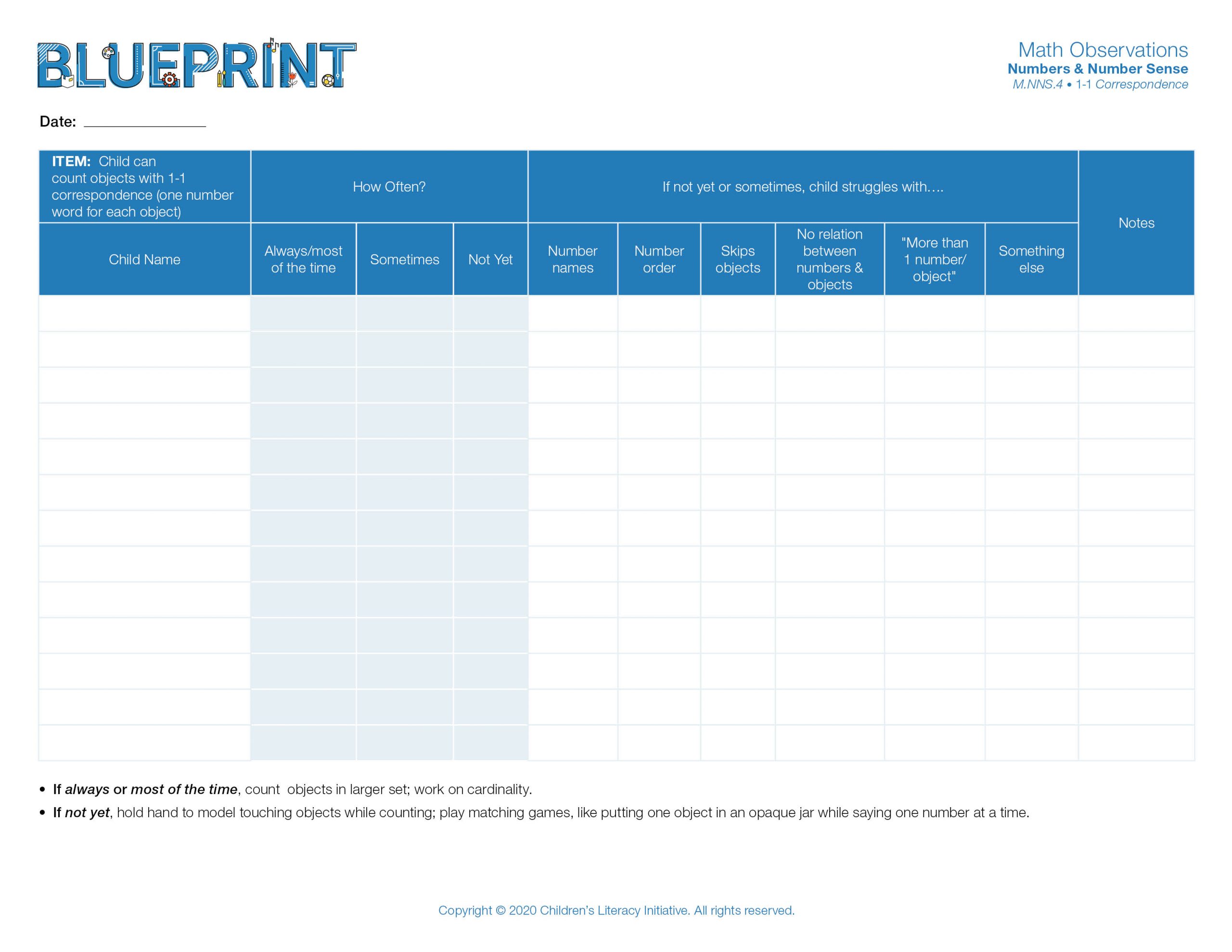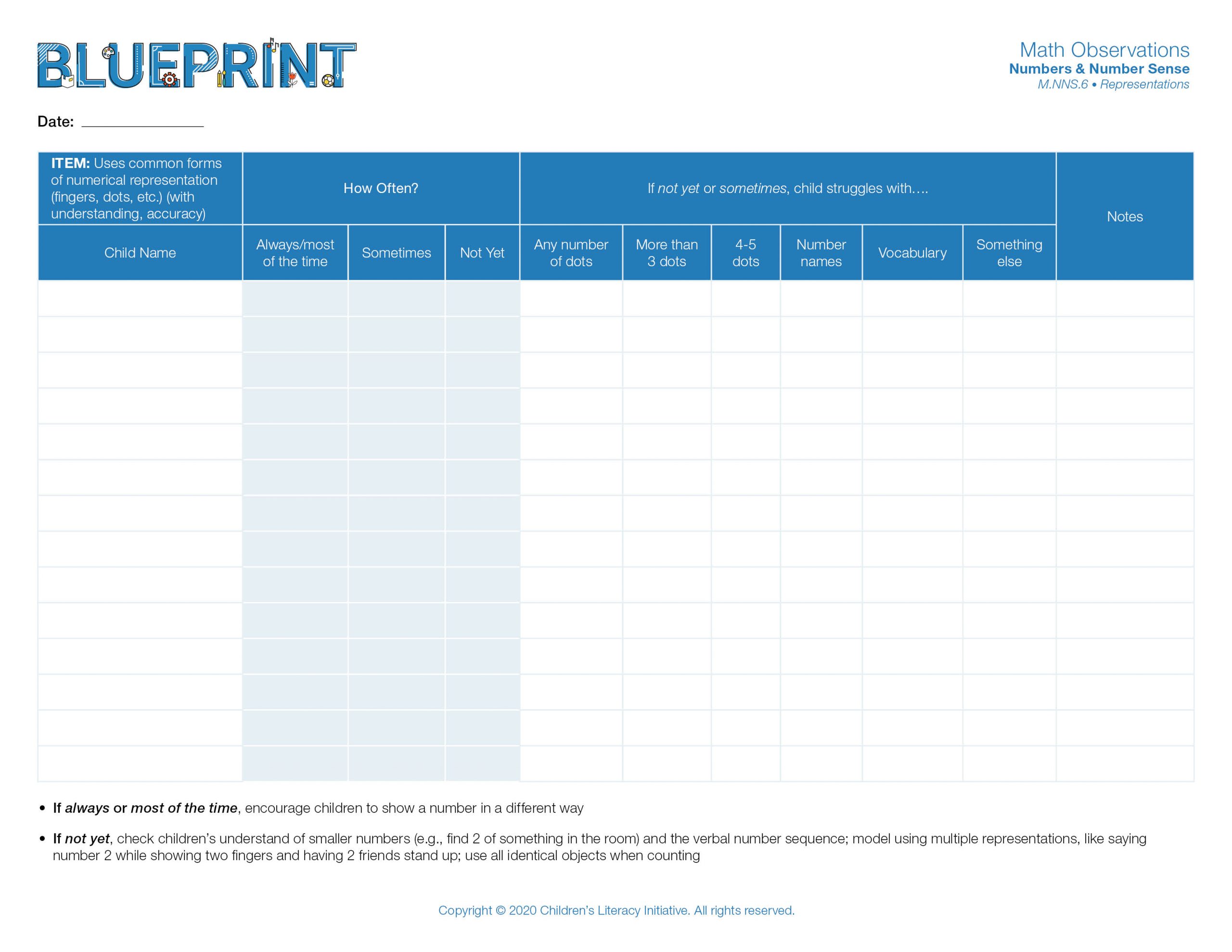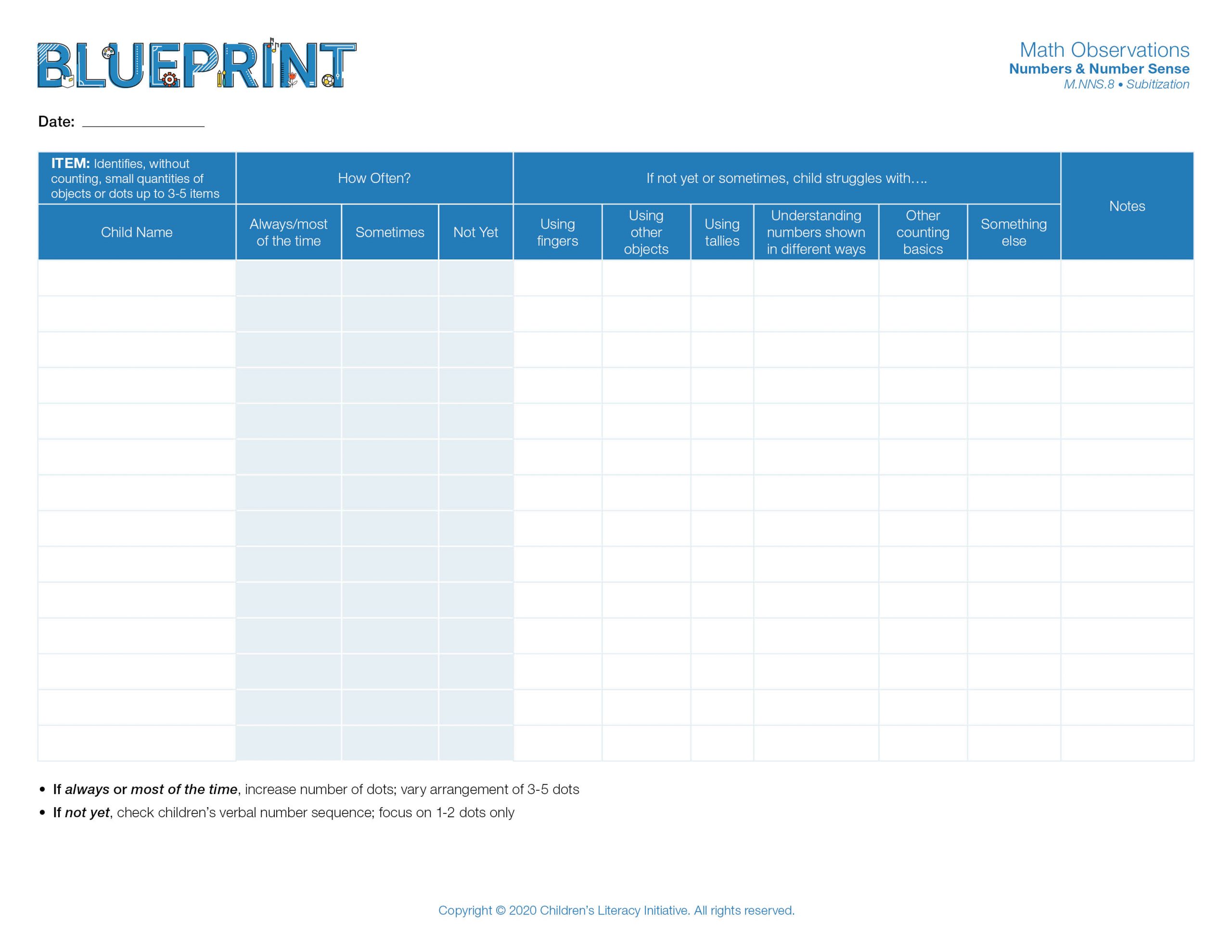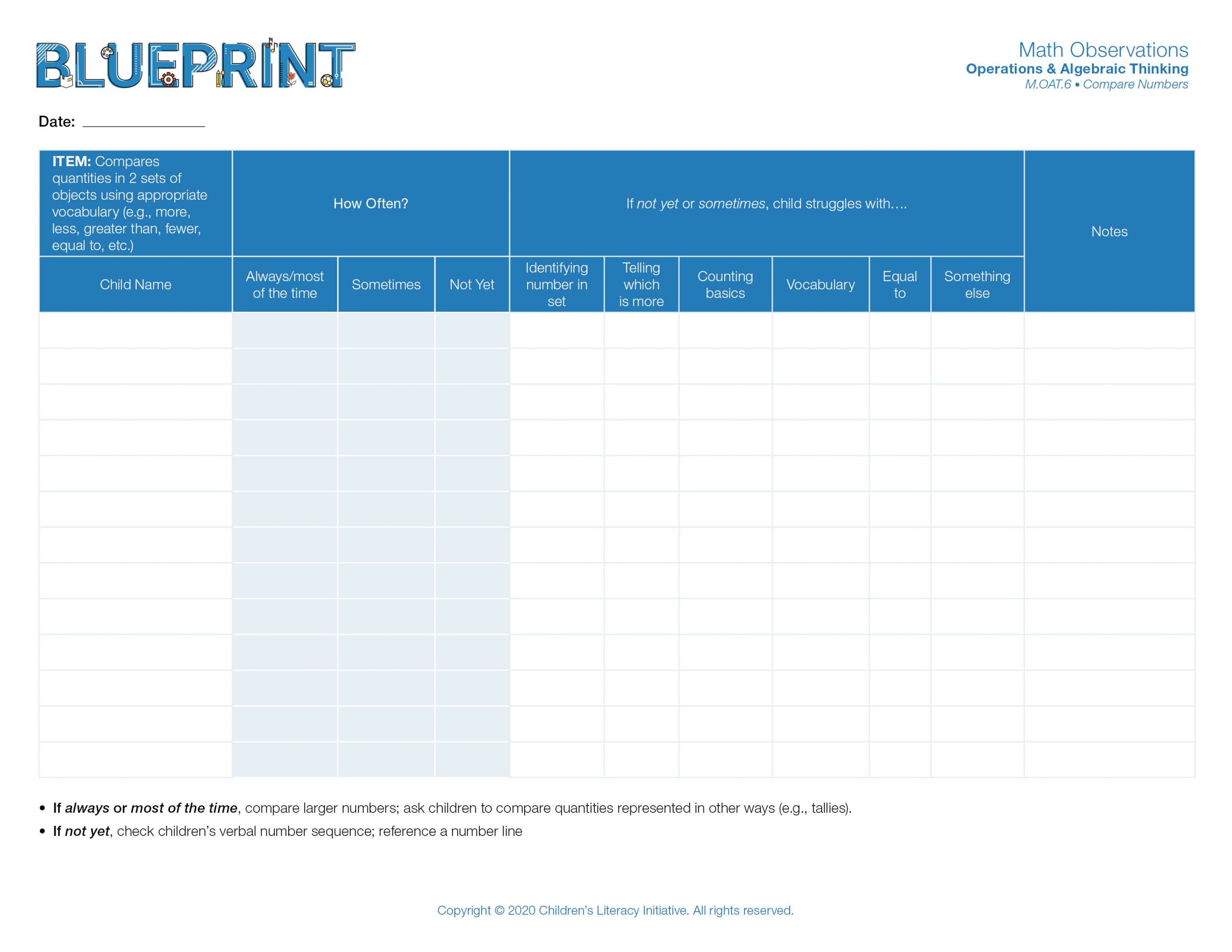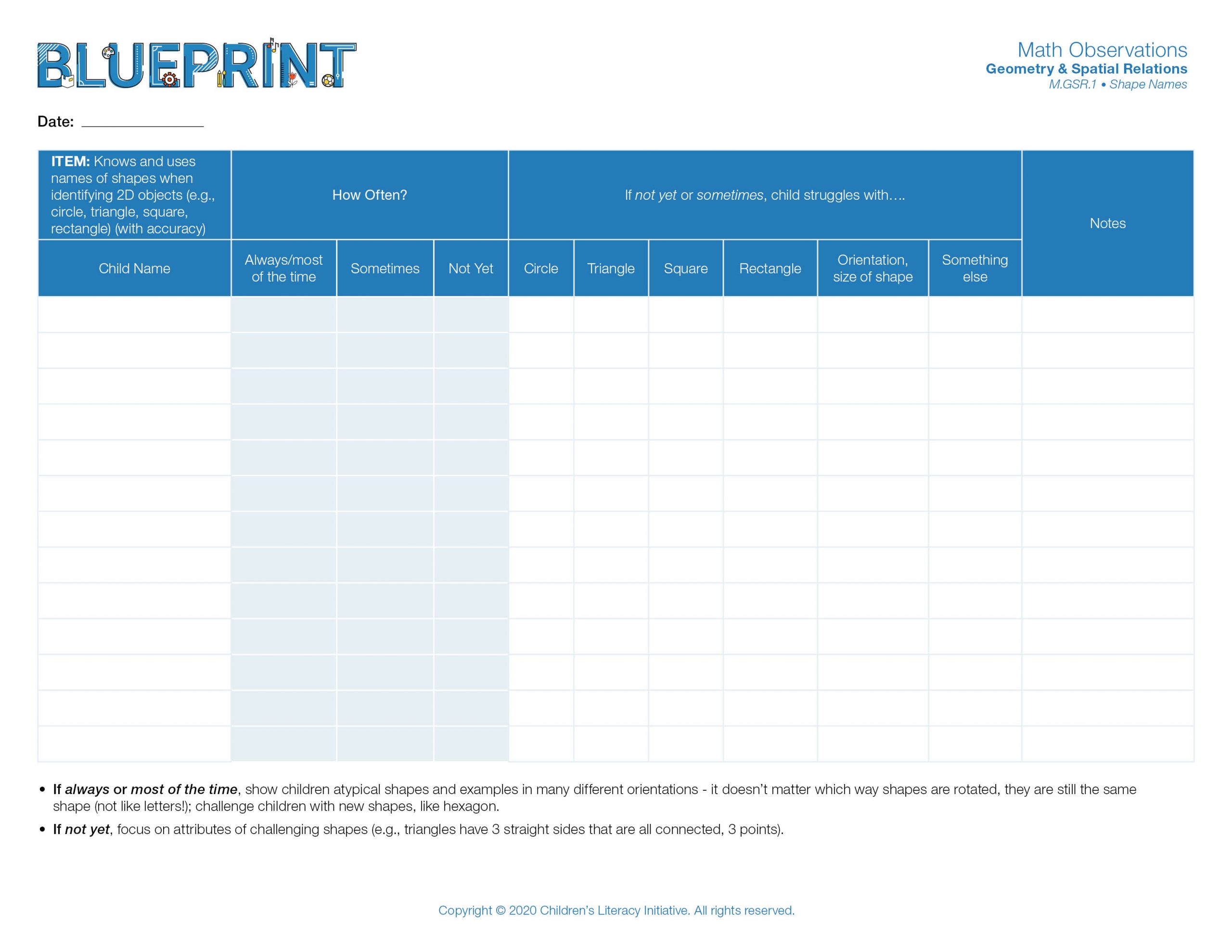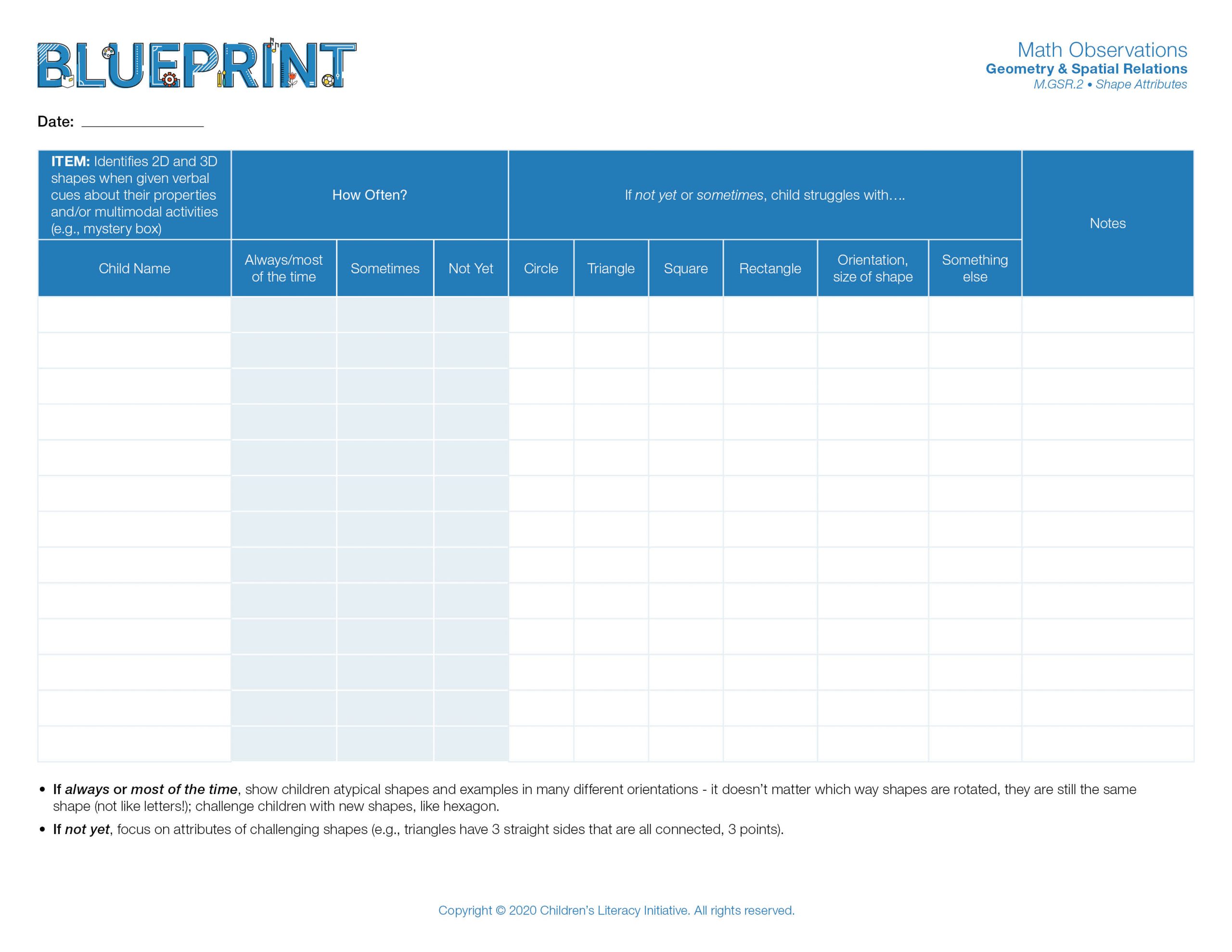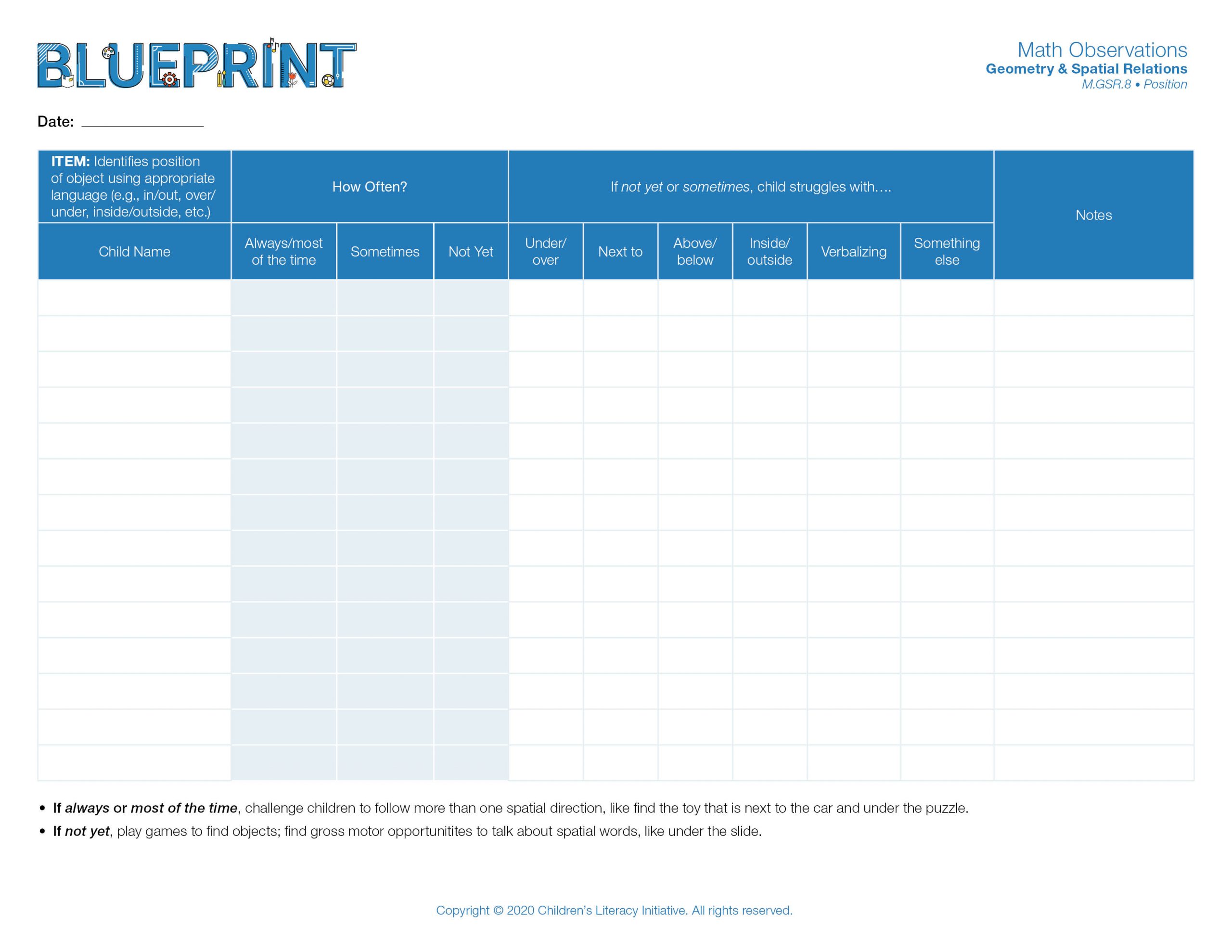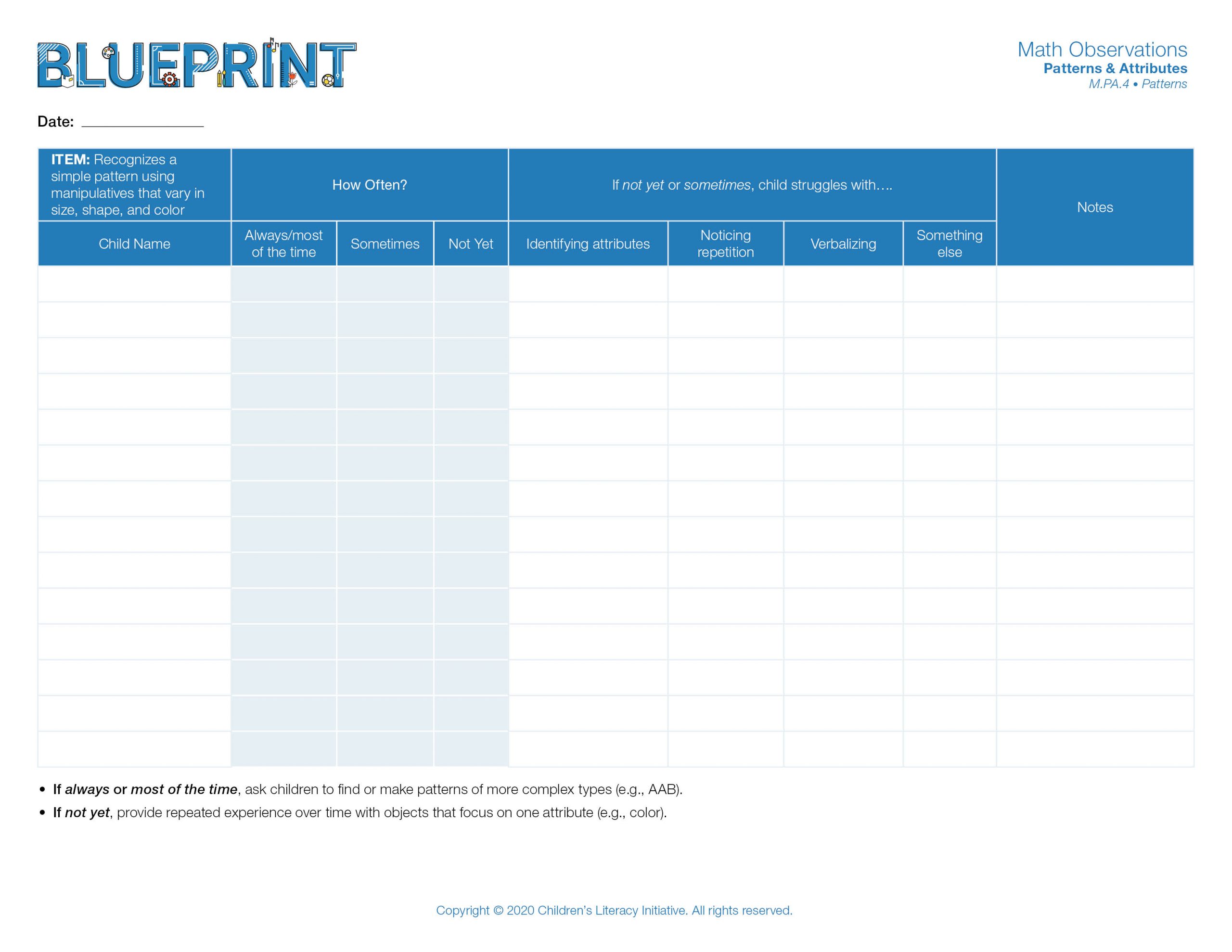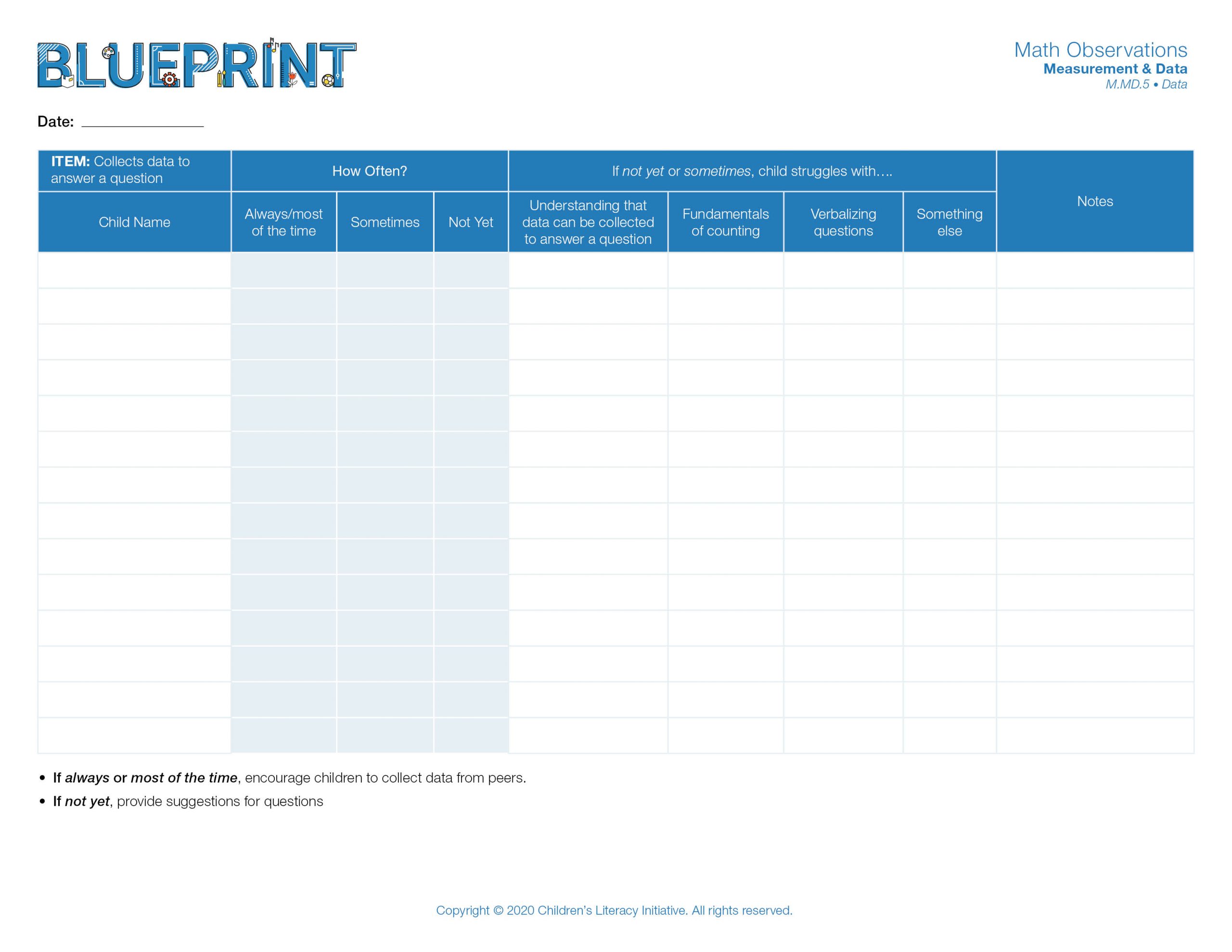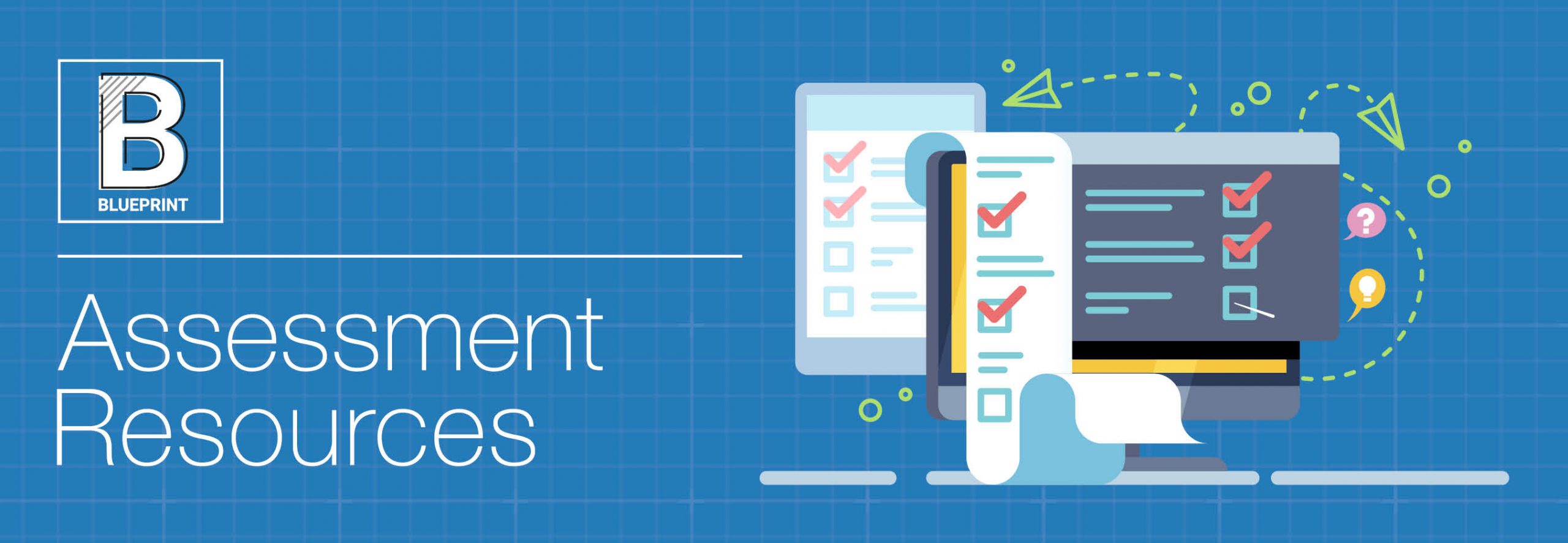
Assessment is a critical step in the learning process.
Blueprint for Early Learning provides several assessment resources. Use these resources to learn what your children’s strengths and needs are and to make instructional decisions.
COMPREHENSIVE
Teaching Point Checklist
Blueprint for Early Learning features a comprehensive set of teaching points that are academically and developmentally appropriate. Use the checklists provided for each unit to record child observation notes. These notes can inform the instructional choices you make to meet the needs of your children.
LITERACY
Developmental Stages
of Writing
LITERACY
Letter and Sound Knowledge
Letters and sounds are the building blocks of words. Use this tool to record each child’s growing knowledge of letters and sounds, and inform individualized instruction. Compile the whole class’ data to help you form strategic groups of children who are working on a particular skill.
LITERACY
Concepts of Print
LITERACY
Phonological Awareness
Phonological Awareness is an umbrella term for specific skills in working with oral language. Developing phonological awareness is an important predictor of later reading and writing success. Use these observation tools to note children’s knowledge of several key components of phonological awareness: syllables, rhymes, and beginning sounds in words. Compile the class’ data to help you analyze children's strengths and needs and to individualize instruction (e.g. form groups of children who are working on a particular skill).

